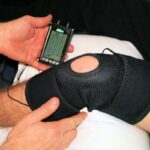According to health reports, over 100 million Americans and around 1.5 billion people in the world live with chronic pain. Chronic pain prevents these people from enjoying a good night’s sleep and interferes with their normal daily activities. Pain management is a branch of medicine that focuses on reducing suffering and improving the quality of life of people who live with chronic pain. Also known as pain medicine, this branch of medicine employs an interdisciplinary approach.
What Should You Expect From a Pain Management Treatment?
A Multi-Disciplinary Pain Management Team
Pain medicine involves the participation and input of several health specialists, including:
- Certified physicians
- Licensed massage therapists
- Chiropractors
- Physical therapists
- Registered nurses
- Athletic trainers
Diagnosis of Chronic Pain
Pain medicine addresses the following types of pain and associated conditions:
- Chronic pain
- Lower back pain
- Constant headaches
- Migraines
- Joint pain
- Neck pain
- Knee joint pain
- Nerve root pain
- Failed back surgery
- Musculoskeletal pain
- Fibromyalgia
- Spinal stenosis
- Degenerative disc disease
- Bulging disc
- Herniated disc
- Diabetic neuropathy
- Carpal tunnel syndrome
- Facet syndrome
- Lyme disease
- Whiplash
- Cancer pain treatment
Treatments for Chronic Pain
Epidural Injections
These are minimally invasive injections that deliver medications, including steroids, directly into the epidural space, a space outside of the sac of fluid around the spinal cord. A health professional uses an X-ray with a special dye to find the right spot for the injection. They choose a spot closest to the pain-causing nerve along the spine from the bottom of the neck to the tailbone. The whole process can be completed in 15 minutes.
Epidural steroid injections start to work in 2-5 days, offering relief from pain for up to several months. This pain treatment option reduces inflammation and pain associated with conditions, such as:
- Degenerative disc disease
- Sciatica
- Disc herniation
- Failed back surgery
- Radiculopathy
Additionally, epidural injections are sometimes used to determine the source of your pain. A health professional can administer the injection targeting a specific nerve.
Trigger Point Injections
Trigger points are painful knots that develop when a muscle cannot relax. These knots are sometimes felt when one rubs the affected muscle. Trigger point injections deliver saline, local anesthetic, or corticosteroid into trigger points, relieving pain in the neck, arms, legs, and lower back. These injections can also treat headaches, fibromyalgia, and myofascial pain.
People who suffer from myofascial pain syndrome experience pain in different parts of the body when pressure is applied in a seemingly unrelated trigger point. This type of pain often occurs after repeated injury or muscle overuse.
Facet Joint Injections
Facet joints are small joints that connect backbones to each other along the spine. They facilitate the flexibility of the spine, allowing it to bend and twist. Facet joints have cartilage between the bones and a sac fluid similar to those found in the knee or hip, which reduces friction during movement. Facet syndrome occurs when a damaged or inflamed facet joint causes debilitating pain in the back and neck. This syndrome is often caused by overuse, injury, or a condition that causes inflammation of the facet joints.
When combined with other non-surgical treatment options for spine pain, such as chiropractic manipulations, physical therapy, medications, and rest, a facet injection can offer relief from neck and back pain.
Peripheral Nerve Block
Also known as a neural blockade, a nerve block is a treatment option for pain that works by preventing nerves in the affected from sending pain signals to the brain. During this treatment process, an anesthetic injection is administered around a specific nerve or a bundle of nerves, blocking the nerves’ impulses from reaching the central nervous system. Instead of feeling pain, the patient feels numb or might have a “pins and needles” sensation in the affected area. Depending on the medication used, a peripheral nerve block can offer pain relief for 12 to 36 hours.
A peripheral nerve block can be used as a stand-alone treatment for pain or combined with another anesthetic in a comprehensive pain management program. It offers relief from the pain associated with:
- Surgery
- Cancer
- Arthritis
- Migraine
- Sciatica
- Herniated disks
- Shingles
Stem Cell Therapy
Stem cell therapy is a new and innovative treatment option for pain. When stem cells are injected in an area, they take on the properties of the surrounding cells. For example, when patients suffering from osteoarthritis caused by worn-down cartilage are treated with stem cell therapy, the injected stem cells adapt to the surrounding cells, helping the cartilage regrow. Since stem cells are naturally found in the body, they pose no risk of an adverse reaction when transferred from one part of the body to another.
Once stem cells are injected in the affected area, they repair and restore damaged tissue, ligaments, tendons, bones, and cartilage. Stem cell therapy is an effective and viable alternative to invasive surgery, treating the pain associated with several conditions and injuries, including:
- Non-healing fractures
- Wrist, knee, elbow, and ankle pain
- Shoulder pain
- Achilles tendinitis
- Chronic neck and back pain
- Foot pain and plantar fasciitis
- Arthritis
- Bursitis
- Torn rotator cuff
Platelet Rich Plasma (PRP)
Also known as platelet therapy, platelet-rich plasma (PRP) therapy is another modern and revolutionary treatment for pain that works by exploiting your body’s natural healing abilities. It is especially effective against musculoskeletal conditions. The body reacts to a soft tissue injury by sending platelet cells that contain healing and growth factors, triggering the natural healing process. During PRP therapy, a health professional draws a small sample of your blood intravenously and places it in a centrifuge. The centrifuge spins the sample, separating platelets from other blood compounds.
This concentration of platelets is then injected into the source of the pain, stimulating and enhancing the natural healing process. PRP therapy can treat pain associated with:
- Anterior cruciate ligament (ACL) injuries
- Tendonitis
- Ligament sprains
- Ankle sprains
- Back and neck injuries
- Pelvic pain and instability
- Rotator cuff tears
- Tennis elbow
- Chronic plantar fasciitis
- Osteoarthritis of the knee, hip, shoulder, and spine
Radiofrequency Ablation (RFA)
This treatment option uses radio waves to heat targeted nerve tissues, impairing the nerves and scrambling transmission of pain signals from the spine to the brain. This option is often used to treat back, neck, and joint pain.
Spinal Cord Stimulation
Spinal cord stimulation (SCS) is an innovative technology that treats complex types of pain by targeting the nerves along the spinal cord with a mild electrical stimulation, preventing pain signals from reaching the brain. This option is effective against:
- Neuropathic pain, including diabetic neuropathy
- Complex regional pain syndrome (CRPS)
- Post-laminectomy syndrome (pain that is felt after back surgery)
Physical Therapy
In physical therapy, a specialist impacts patients with pain-relieving techniques, such as stretching, strengthening, and other pain-relieving movements. These techniques help patients affected by injury or disability improve their function and mobility.
Pain Specialists
Pain can interfere with wellbeing and lower the quality of your life, but by using innovative medical technology, we can help you manage chronic pain, allowing you to resume work and go back to the life you love. To access effective pain management services, contact B3 Medical in Wesley Chapel, FL!



























